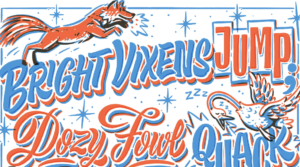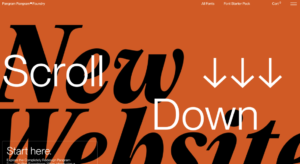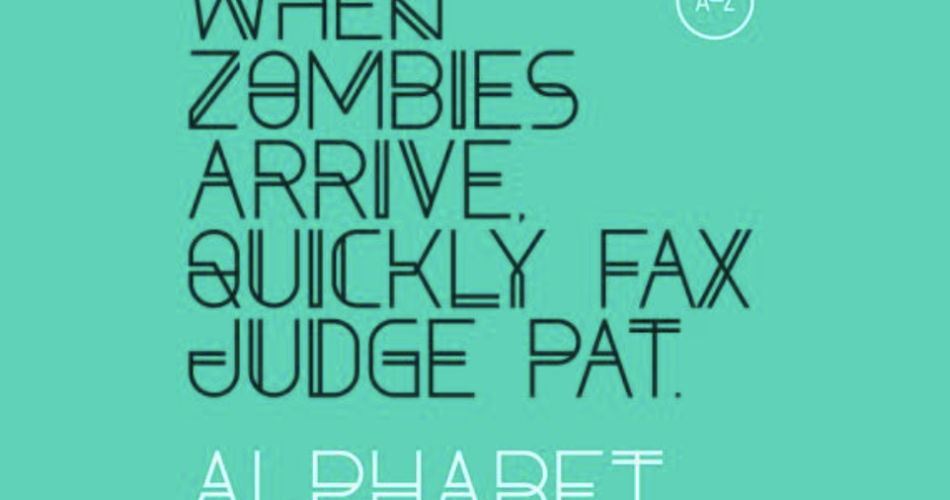A pangram is a sentence or phrase that contains all the letters of the alphabet. These linguistic gems are not only visually captivating but also serve as powerful tools in various applications, from typography and design to language learning and creative expression. As an experienced writer, I am excited to embark on a journey through the world of pangrams and share with you the art of crafting the perfect pangram.
In this comprehensive guide, we will explore the fascinating history, importance, and practical applications of pangrams. We’ll delve into the characteristics of a great pangram, discover famous examples, and learn how to create our own masterpieces. Whether you’re a designer, a language enthusiast, or simply someone who appreciates the beauty of words, this article will equip you with the knowledge and inspiration to harness the power of pangrams.

pangrams
Contents
- 1 The importance of pangrams
- 2 Famous pangrams and their origins
- 3 How to create a perfect pangram
- 4 The characteristics of a great pangram
- 5 Using pangrams in typography and design
- 6 The role of pangrams in language learning
- 7 Fun and creative uses of pangrams
- 8 Pangram challenges and competitions
- 9 Conclusion: Embracing the art of the perfect pangram
The importance of pangrams
Pangrams hold a special place in the world of language and communication. They serve as a concise and efficient way to showcase the full range of letters in a given alphabet, making them invaluable in various contexts. From typography and font testing to language learning and assessment, pangrams have become an integral part of many industries and disciplines.
By understanding the importance of pangrams, we can appreciate their versatility and explore the multitude of ways they can be utilized. Pangrams not only demonstrate the completeness of an alphabet but also challenge our creativity and linguistic prowess. As we delve deeper into the subject, we’ll uncover the compelling reasons why mastering the art of the perfect pangram is a worthwhile pursuit.
Famous pangrams and their origins
Throughout history, various cultures and individuals have crafted captivating pangrams that have stood the test of time. From the classic “The quick brown fox jumps over the lazy dog” to the more obscure “Pack my box with five dozen liquor jugs,” each pangram has a unique story and origin.
Let’s explore some of the most famous pangrams and their intriguing histories:
- “The quick brown fox jumps over the lazy dog”: This iconic pangram is believed to have originated in the late 19th century and has since become a staple in the world of typography and language learning.
- “Sphinx of black quartz, judge my vow”: This pangram, with its enigmatic and mysterious tone, is often used in the context of cryptography and code-breaking.
- “How vexingly quick daft zebras jump!”: This playful pangram, with its alliterative charm, has gained popularity in the realm of creative writing and wordplay.
- “Amazingly few discotheques provide jukeboxes”: This pangram, with its unexpected and humorous phrasing, has become a favorite among language enthusiasts and puzzle enthusiasts.
By delving into the rich history and cultural significance of these famous pangrams, we can gain a deeper appreciation for the art of crafting the perfect sentence that encompasses the entire alphabet.

pangrams
How to create a perfect pangram
Crafting a perfect pangram is an art form in itself, requiring a delicate balance of creativity, linguistic prowess, and attention to detail. As an experienced writer, I have honed the skills necessary to create pangrams that not only showcase the full range of letters but also captivate the reader with their elegance and originality.
Here are the key steps to creating a perfect pangram:
- Familiarize yourself with the alphabet: Thoroughly understand the letters in the alphabet you’re working with, their frequency, and any unique or uncommon characters.
- Brainstorm and experiment: Engage in a free-flowing process of word association, phrase construction, and creative exploration. Don’t be afraid to try unconventional combinations and explore different themes or contexts.
- Ensure alphabetic completeness: Carefully review your pangram to ensure that it contains all the letters of the alphabet, without any omissions or duplications.
- Refine for clarity and flow: Polish your pangram to enhance its readability, rhythm, and overall aesthetic appeal. Consider factors like word choice, sentence structure, and the balance of vowels and consonants.
- Test and refine: Share your pangram with others, solicit feedback, and continue to refine it until you’re satisfied with the final result. Embrace the iterative nature of the creative process.
By following these steps and honing your skills, you’ll be well on your way to crafting the perfect pangram that will captivate and inspire your audience.
The characteristics of a great pangram
A truly exceptional pangram possesses a unique set of characteristics that set it apart from the ordinary. As an experienced writer, I have identified the key elements that contribute to the creation of a great pangram:
- Alphabetic Completeness: The most fundamental characteristic of a great pangram is that it must contain all the letters of the alphabet, without any omissions or repetitions.
- Elegance and Aesthetics: A perfect pangram should be visually appealing, with a harmonious balance of letters, words, and sentence structure. The rhythm and flow of the pangram should be pleasing to the ear.
- Originality and Creativity: The best pangrams are those that offer a fresh and unexpected perspective, challenging the reader’s assumptions and sparking their imagination.
- Contextual Relevance: A great pangram should be crafted with a specific context or purpose in mind, whether it’s for typography, language learning, or creative expression.
- Memorability and Quotability: The most iconic pangrams are those that are easily remembered and can be readily recalled by the reader or viewer.
By incorporating these characteristics into the pangrams we create, we can elevate the art form and produce works that are not only functionally useful but also aesthetically and intellectually captivating.
Using pangrams in typography and design
In the world of typography and design, pangrams have long been recognized as invaluable tools for a variety of applications. As an experienced writer, I have seen firsthand the impact that well-crafted pangrams can have on the visual landscape.
Pangrams are commonly used in the following design and typography contexts:
- Font Testing and Evaluation: Designers and typographers rely on pangrams to assess the legibility, kerning, and overall appearance of a typeface. By setting the pangram in the font, they can quickly identify any issues or areas for improvement.
- Branding and Identity: Pangrams can be incorporated into brand assets, logos, and other visual elements to showcase the versatility and completeness of a company’s visual identity.
- Editorial and Publication Design: Magazines, newspapers, and other publications often feature pangrams as part of their layout and design, adding a touch of elegance and sophistication to the overall aesthetic.
- Packaging and Product Design: Pangrams can be used on packaging, labels, and other product-related materials to convey a sense of quality, attention to detail, and linguistic prowess.
- Advertising and Promotional Materials: Clever and memorable pangrams can be used in advertising campaigns, social media posts, and other promotional content to capture the audience’s attention and reinforce a brand’s messaging.
By understanding the role of pangrams in typography and design, we can harness their power to create visually stunning and impactful work that resonates with our target audience.

Using pangrams in typography and design
The role of pangrams in language learning
In the realm of language learning, pangrams have long been recognized as invaluable tools for both students and educators. As an experienced writer, I have witnessed the transformative power of pangrams in enhancing language proficiency and fostering a deeper appreciation for the intricacies of language.
Pangrams play a crucial role in language learning in the following ways:
- Alphabet Mastery: Pangrams provide a concise and engaging way for language learners to familiarize themselves with the complete set of letters in a given alphabet, reinforcing their recognition and recollection.
- Pronunciation and Articulation: The rhythmic nature of pangrams encourages language learners to practice proper pronunciation and articulation, helping them develop a more natural and fluent speaking ability.
- Vocabulary Expansion: Crafting and analyzing pangrams can expose language learners to a diverse range of vocabulary, expanding their lexical knowledge and enhancing their overall linguistic competence.
- Writing and Composition: The process of creating pangrams encourages language learners to explore the nuances of sentence structure, word choice, and stylistic techniques, ultimately improving their written expression.
- Assessment and Evaluation: Pangrams can be used as effective tools for language assessment, allowing educators to gauge a learner’s proficiency and identify areas for further development.
By incorporating pangrams into language learning curricula and activities, we can create engaging and enriching experiences that foster a deeper appreciation for the beauty and complexity of language.
Fun and creative uses of pangrams
Pangrams are not merely functional tools; they can also be a source of endless creativity and enjoyment. As an experienced writer, I have explored the myriad ways in which pangrams can be used for fun, entertainment, and self-expression.
Here are some of the creative and playful applications of pangrams:
- Wordplay and Puzzles: Pangrams can be the foundation for a variety of word games, riddles, and puzzles, challenging players to uncover hidden meanings, decipher coded messages, or create their own unique pangrams.
- Poetry and Literature: Skilled writers can weave pangrams into their poetic compositions, creating layers of meaning and linguistic artistry that captivate the reader.
- Visual Arts and Graphic Design: Artists and designers can incorporate pangrams into their work, using the letters as the basis for intricate illustrations, typographic compositions, or interactive installations.
- Music and Performance: Pangrams can be set to music, with their rhythmic and melodic qualities inspiring the creation of songs, chants, and other musical performances.
- Personal Expression and Customization: Individuals can use pangrams to personalize their belongings, from t-shirts and mugs to social media profiles and email signatures, as a way to showcase their linguistic prowess and unique personality.
By embracing the fun and creative potential of pangrams, we can unlock new avenues of self-expression, intellectual stimulation, and artistic exploration.
Pangram challenges and competitions
In the ever-evolving world of language enthusiasts and word aficionados, pangram challenges and competitions have emerged as exciting arenas for showcasing one’s linguistic prowess and creative ingenuity. As an experienced writer, I have participated in and observed these engaging events, and I can attest to the thrill and satisfaction they provide.
Pangram challenges and competitions often take various forms, including:
- Pangram Creation Contests: Participants are challenged to craft the most creative, original, or aesthetically pleasing pangram, with judges evaluating the entries based on predetermined criteria.
- Pangram Puzzles and Scavenger Hunts: Participants are tasked with deciphering hidden pangrams, solving anagram-based riddles, or uncovering pangrams within larger bodies of text.
- Pangram-Inspired Art and Design Challenges: Participants are invited to create visual representations of pangrams, such as typographic compositions, illustrations, or interactive installations.
- Pangram-Themed Language Competitions: Participants engage in activities like pangram recitation, pangram-based trivia, or multilingual pangram composition.
These challenges and competitions not only provide a platform for showcasing one’s linguistic prowess but also foster a sense of community among language enthusiasts. Participants can share their creations, learn from one another, and engage in spirited discussions about the art of the perfect pangram.
Conclusion: Embracing the art of the perfect pangram
As we reach the end of our journey through the captivating world of pangrams, I hope you’ve gained a deeper appreciation for these linguistic gems and their multifaceted applications. From their historical significance to their practical uses in typography, design, and language learning, pangrams have proven to be invaluable tools in the realm of communication and self-expression.
Embrace the art of the perfect pangram and let your creativity soar! Explore the resources and challenges mentioned in this guide, and start crafting your own masterpieces. Share your creations with the world and join the vibrant community of pangram enthusiasts. Together, we can continue to push the boundaries of what’s possible with these captivating linguistic wonders.
As an experienced writer, I encourage you to dive headfirst into the world of pangrams and discover the joy and fulfillment that comes with mastering this unique art form. Whether you’re a designer, a language learner, or simply someone who appreciates the beauty of words, the perfect pangram awaits you
